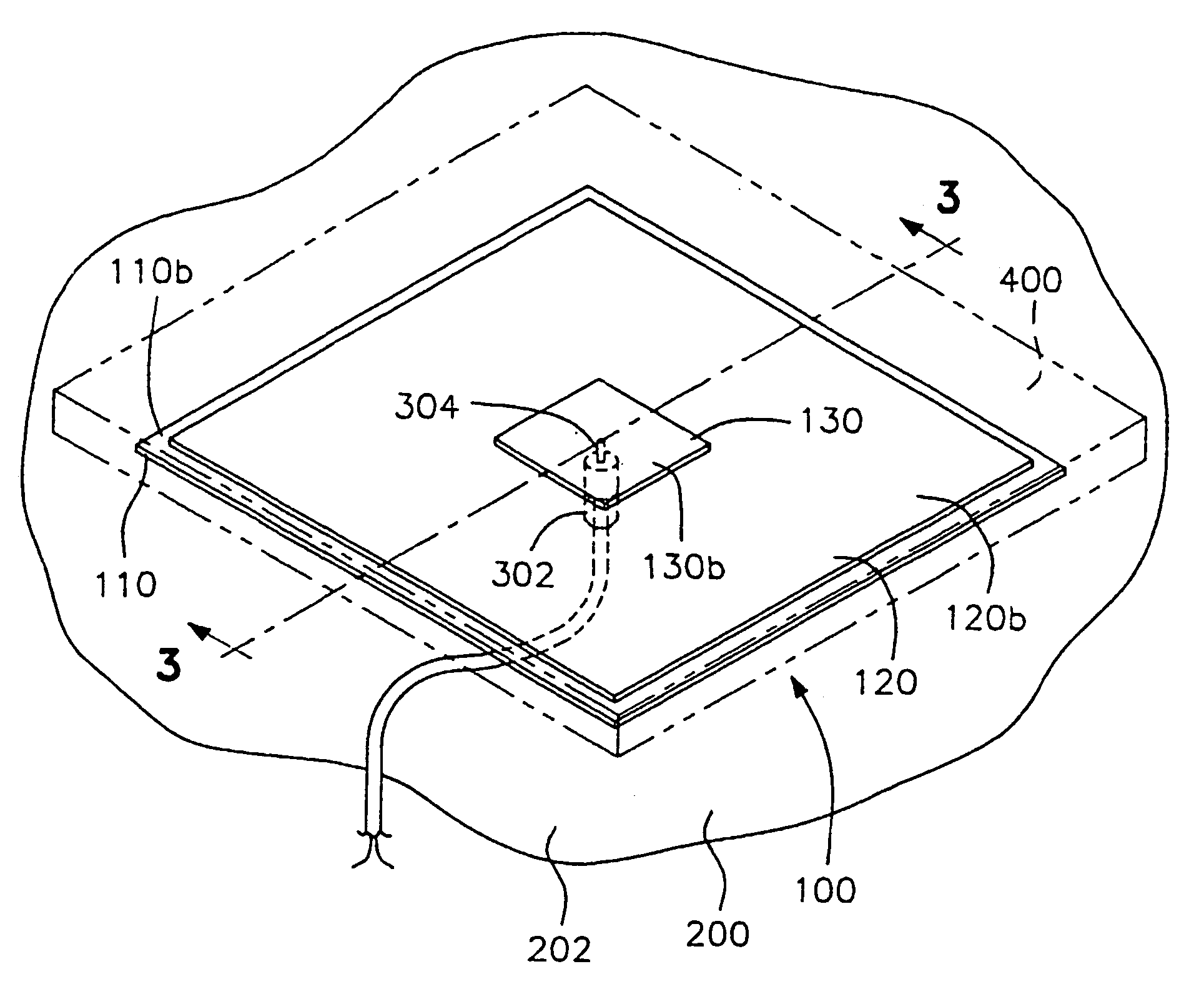Coating applied antenna and method of making same
a technology of coating applied to antennas and antennas, which is applied in the direction of resonant antennas, substantially flat resonant elements, and protective materials radiating elements, etc. it can solve the problems of inability to meet the design requirements of antennas, the material and shape of aircraft may not be compatible with antenna design requirements, and the efficiency of microstrip patch antennas at vhf/uhf, etc., to achieve low profile, light weight, and the effect of increasing bandwidth
- Summary
- Abstract
- Description
- Claims
- Application Information
AI Technical Summary
Benefits of technology
Problems solved by technology
Method used
Image
Examples
Embodiment Construction
[0028]In describing preferred embodiments of the present invention illustrated in the drawings, specific terminology is employed for the sake of clarity. However, the invention is not intended to be limited to the specific terminology so selected, and it is to be understood that each specific element includes all technical equivalents that operate in a similar manner to accomplish a similar purpose.
[0029]Referring now to FIGS. 1–3, there is shown an antenna 100 in accordance with the present invention applied to an outer surface of a substrate structure 200 such as a curved aircraft surface, particularly a sharply or double curved surface such as an aircraft wing, body, etc, as well as on internal communication systems platforms such as ships, aircraft, building structures, etc. The substrate structure 200 can be made of materials such as aluminum, steel, metal alloys, composite structures, fiber reinforced plastics, polycarbonate, acrylic, polyethylene, polypropylene, fiberglass, e...
PUM
 Login to View More
Login to View More Abstract
Description
Claims
Application Information
 Login to View More
Login to View More - R&D
- Intellectual Property
- Life Sciences
- Materials
- Tech Scout
- Unparalleled Data Quality
- Higher Quality Content
- 60% Fewer Hallucinations
Browse by: Latest US Patents, China's latest patents, Technical Efficacy Thesaurus, Application Domain, Technology Topic, Popular Technical Reports.
© 2025 PatSnap. All rights reserved.Legal|Privacy policy|Modern Slavery Act Transparency Statement|Sitemap|About US| Contact US: help@patsnap.com



